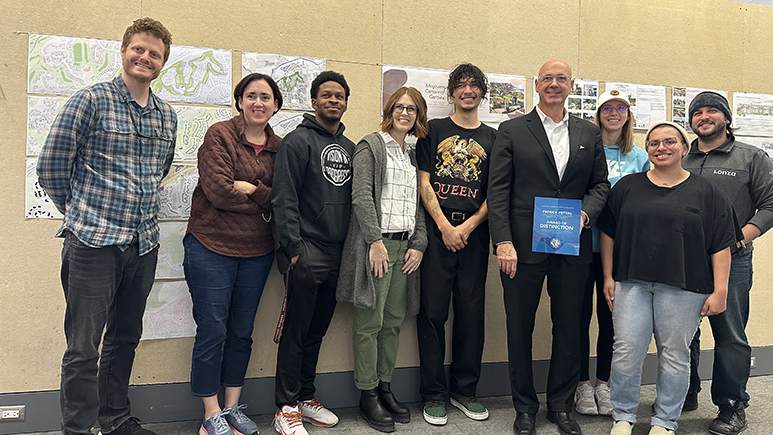Students in any architecture program will likely learn about designing steel structures, but students at the University of Houston’s Gerald D. Hines College of Architecture take it to the next level: They get to fabricate the steel used to erect their designs, then watch that steel structure make a difference to a community.
In his role as director of the UH Graduate Design/Build Studio, which he has held since 1994, Patrick Peters acquaints Master of Architecture students with the steel fabrication process to give them a more well-rounded understanding of complex design in the context of real-world community projects.
“In the process of steel fabrication and design, students learn about climate-responsive and site-responsive green building, they learn about techniques of collaboration, and they learn about the architect’s role in building community,” Peters said. “Hopefully, they learn about creating lasting works of architecture.”
In fact, the deliberate way Peters introduces architecture students to steel fabrication inspired AISC to honor him with an Award of Distinction earlier this year.

Patrick Peters accepted an AISC Award of Distinction in early 2023.
The students working in the Graduate Design/Build Studio start by designing and modeling their projects, including creating a set of fabrication drawings. Once their drawings are complete, they have a hand in fabricating the steel for their project’s structural system at the Keeland Design Lab, also at UH, as well as constructing the structure. By participating in each step of a project’s creation, students gain a holistic understanding of the process of developing a steel building, which they can use on more complex projects later in their careers.
They’re also getting real-world experience with a structural material that provides unique sustainability benefits--experience that will serve them well as the AEC community continues to develop with a focus on eco-friendly design and construction. American steel has a circular supply chain; it’s a fully recyclable material that contains up to 93% recycled content, which makes it ideal for the buildings these students design to sustain a community.
“We provide our projects’ stakeholders with a durable, elevating work of architecture that they can continue to use for many, many years,” Peters said. “The Graduate Design/Build Studio has a 33-year history of designing and building permanent works of architecture for area nonprofits. Virtually all of them have been steel structures, because steel constructions provide the best durability, economy of means, and responsiveness to customization as demanded by site-specific design requirements.”
By overseeing architecture students as they watch their ideas evolve from initial conception to completed construction, Peters hopes his students will leave the program and embark on their careers with a wide variety of skills and values, including teamwork and community involvement.
“Ultimately, the purpose of my course is to make each student a better architect,” Peters said.